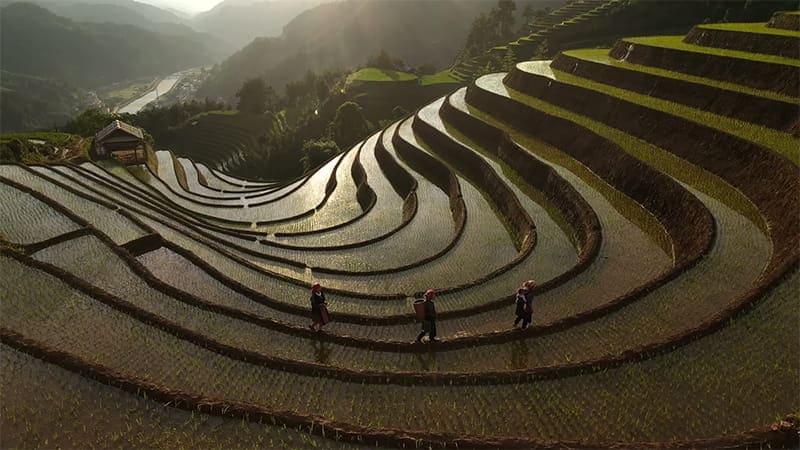More than 70% of critical minerals key for the net zero energy transition at risk from climate disruption: PwC 2024 Climate Risks to Nine Key Commodities Report
PwC’s report – Climate Risks to Nine Key Commodities: Protecting People and Prosperity – analysed nine commodities crucial to the global economy and their risk exposure to drought and heat stress. Risk was categorised as significant, high or extreme. Heat stress risk is categorised based on durations above Wet Bulb Globe Temperature [WBGT] limits. WBGT reflects the combined impact of temperature and humidity. Drought risk is categorised based on percentage of time spent in severe drought over a 20 year period. Exposure of key mines and farms critical to the production of the nine commodities was assessed relative to climate-related drought and heat stress at a present day baseline and in two future years: 2035 and 2050. For 2050, we examined how risk exposures vary depending on how effectively the world reduces its carbon emissions by comparing low vs high emission scenarios.
While our approach provides a useful insight into how different commodities may become more exposed to different climate perils in the future, there are a number of limitations. These include that we do not estimate potential changes in production and we cannot predict future actions to adapt.
You can read the full report, and learn more about key takeaways for climate risk adaptation on www.pwc.com
More than 70% of critical minerals key for the net zero energy transition at risk from climate disruption: PwC 2024 Climate Risks to Nine Key Commodities Report
More than 70% of the production of copper, cobalt and lithium – minerals crucial for the clean energy transition – could face significant or higher drought risk by 2050 under a high emissions scenario. Up from less than 10% percent today.
Food crops also face significant risk: 90% of the world’s rice production could face significant heat stress by 2050 (up from 75% today), and more than 30% and 50% of maize and wheat, respectively, could face significant drought risk by 2050, under a high emissions scenario.
CEOs are increasingly taking proactive measures, with 47% focused on protecting their workforces and physical assets from climate risk.
CEOs need to accelerate their action plans to safeguard the production of commodities critical to the global population and economy as heat stress and drought risk rise around the world, according to PwC’s report, Climate risks to nine key commodities: Protecting people and prosperity, published today.
The report, which analysed nine commodities across critical minerals (copper, cobalt, lithium), key crops (wheat, rice, maize) and vital metals (zinc, iron, aluminium), finds that although reducing emissions will decrease heat and drought risks, key commodities will still face significant stress, even under a low emissions scenario modelled by PwC.
According to the analysis, even if global carbon emissions rapidly decrease (low emissions scenario), 87% of the world’s rice production, more than 70% of cobalt and lithium production, and around 60% of the world’s bauxite and iron production will be at risk by 2050.
Importantly, these risks can be managed - and 47% of CEOs say they are already focused on protecting their workforces and physical assets from climate risk.
Anna Parokinna, ESG reporting Leader, PwC Ukraine, said:
Findings of PwC’s global survey reveal that implications of climate change will affect absolutely everyone in the foreseeable future. This is why climate risks are already a special area of attention for risk management policies of the companies that focus not only on financial performance, but also on their environmental impacts. EU law responds accordingly, and Ukrainian businesses follow suit. We are confident that, as far as climate risks are concerned, it is the mission and the key objective of each business to respond on time, and do everything to prevent and mitigate climate change without delay. It is these actions that will drive successful performance of companies, as well as health and wellbeing of the planet’s population.
Essential commodities face heightened exposure to drought and heat risk
Critical Minerals
By 2050, even if the world sharply reduces its carbon emissions, over 70% of cobalt and lithium production could face significant, high, or extreme drought risk – up from near zero today. Less than 10% of copper production faces significant or greater drought risk today, rising to over half in a 2050 low emissions scenario and over 70% in a high emissions scenario. Cobalt, copper and lithium are integral to electronics and clean-energy technologies.
Key Crops
All three crops (wheat, rice, maize) face growing risks from both heat stress and drought. Taken together, these three crops account for 42% of the calories people eat. The most widespread and serious risk is to rice, around 90% of which will face significant or greater heat stress risk by 2050 in a high emissions scenario. Currently, over 75% of rice is grown in conditions of significant or greater heat risk, showing that it is not just the level of risk that matters, but also how well producers are prepared to adapt. Drought risk is also increasing sharply for key crops. Currently, around 1% of maize and wheat face significant drought risk, rising to more than 30% and 50% respectively in a 2050 high emissions scenario.
Vital Metals
PwC research finds that vital metals face increasing amounts of risk. In particular, over 60% of the world’s bauxite and iron production may face significant or greater heat stress risk by 2050, even in a low emissions scenario (up from 30 - 50% currently). In a high emissions scenario in 2050, 40% of the world’s zinc production may face significant or greater drought risk (up from zero significant drought risk currently). Aluminium (from bauxite), iron and zinc are widely used in manufacturing, transport, and infrastructure.
Production of all nine critical commodities is also concentrated in a limited number of countries – many of which face increasing climate risks. For each resource, at least 40% - and as much as 85% - of its global supply is produced from a distinct set of no more than three countries.
The sustainability imperative
Companies and CEOs are increasingly recognising the impact of climate disruption and taking action. Already, 47% of CEOs have taken proactive measures to safeguard their workforces and physical assets from climate change, according to PwC’s 2024 Annual Global CEO Survey. However, more needs to be done if the global economy is to adapt to climate risk:
- Enhance resilience by identifying and managing risks throughout the supply chain;
- Capitalise on the opportunities to deliver products, services, or business models that help companies and communities adapt; and
- Join forces with stakeholders from governments to communities to shape collaborative outcomes and enhance adaptation at a policy and systemic level.
Will Jackson-Moore, Global Sustainability Leader, PwC UK, concludes:
“Many locations that produce essential commodities are likely to experience more frequent spells of intense drought and heat stress by 2050, even in an optimistic low emissions scenario. To avoid economic losses and protect communities and ecosystems, producers, and the broader business community, should understand the impact of climate disruption on production and engage in multi-stakeholder efforts to adapt. This will also strengthen efforts to more rapidly transition to a net zero economy.”
Climate risks to nine key commodities
Protecting people and prosperity
Contact us








